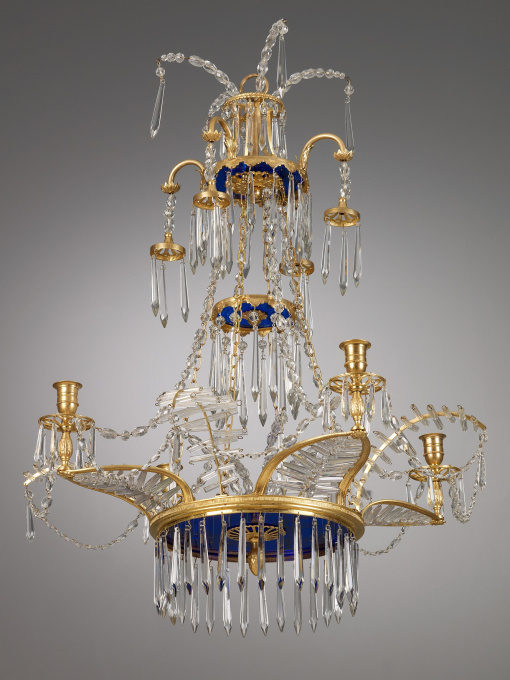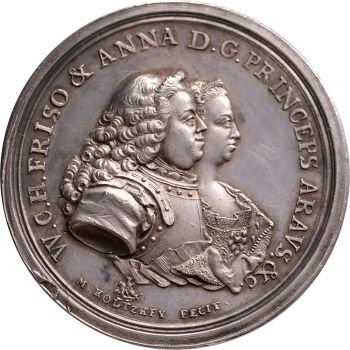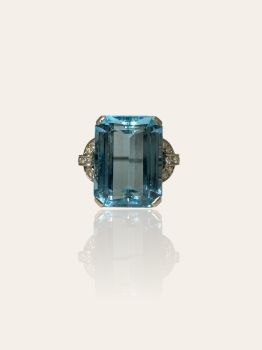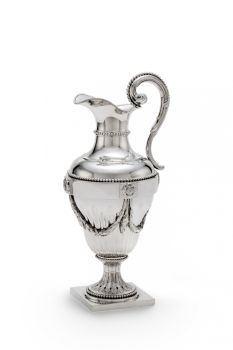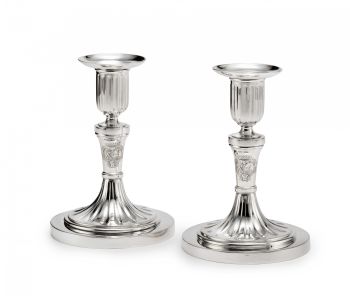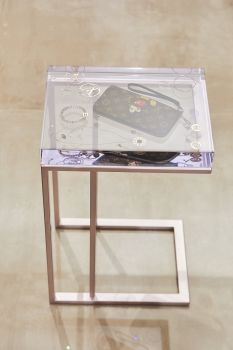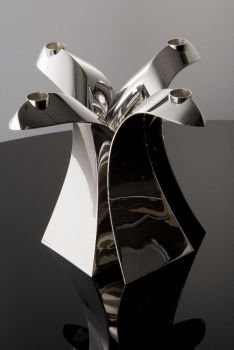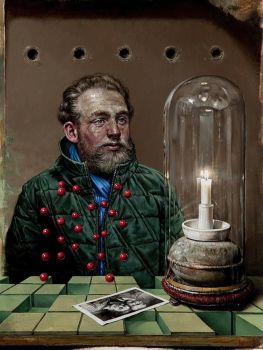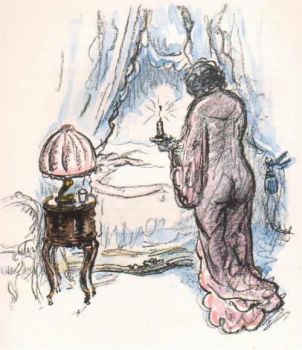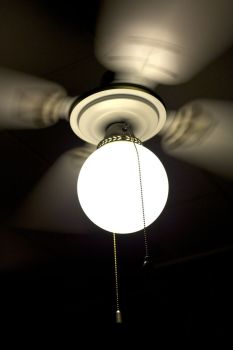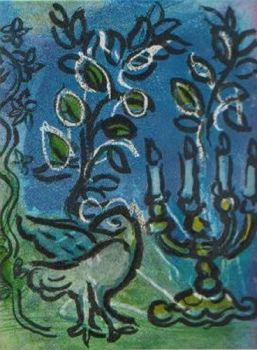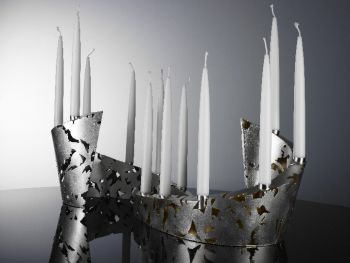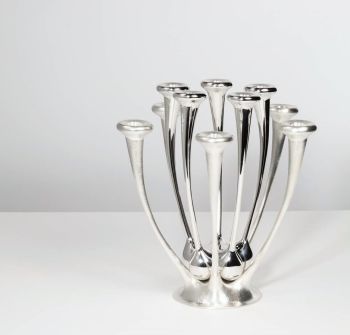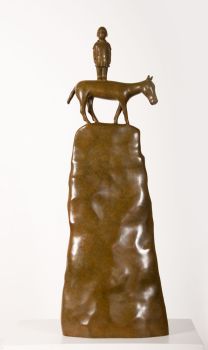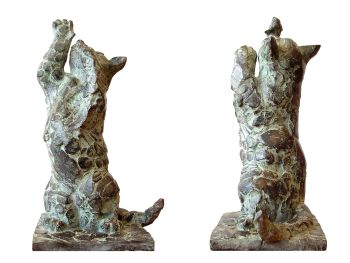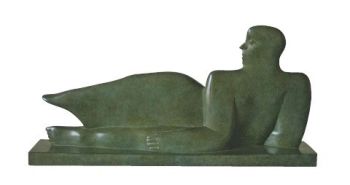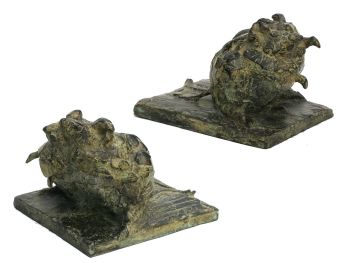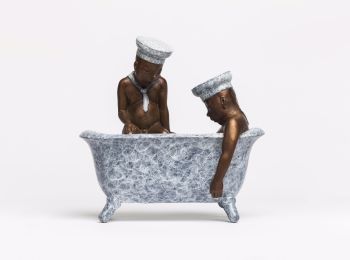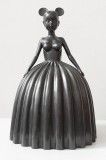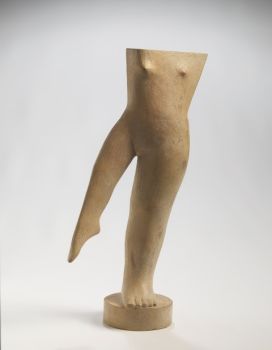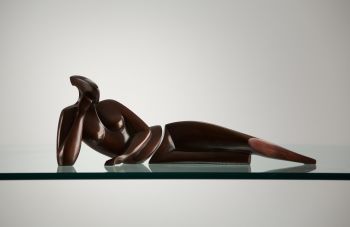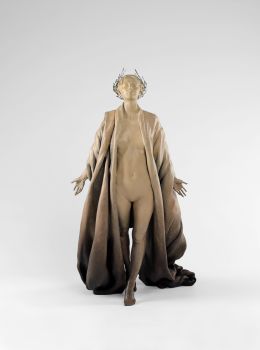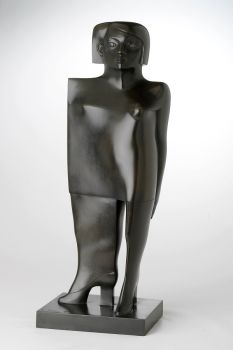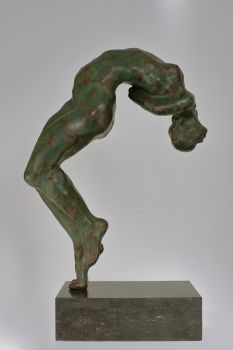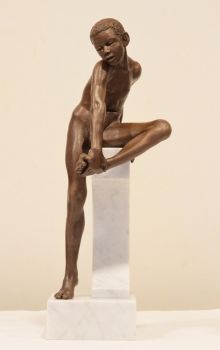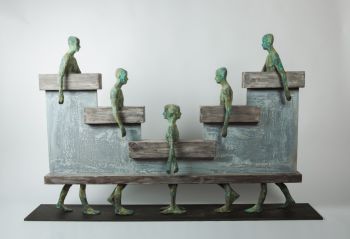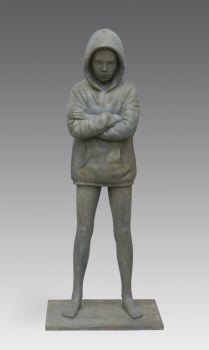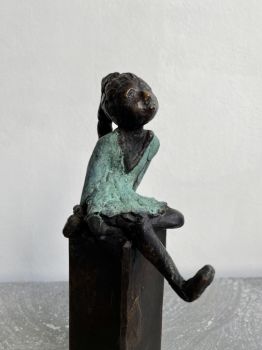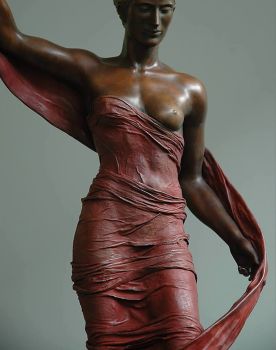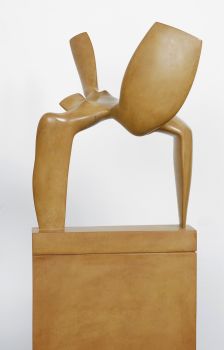German Chandelier, Dresdner Spiegelmanufaktur 1797
Artiste Inconnu
VerreBronzeOrCristalMétalDoréGemme
75 cm, ø 62 cm
Actuellement indisponible via Gallerease
- Sur l'oeuvre d'artA German chandelier with four lights manufactured by the Dresdner Spiegelmanufaktur. The construction of the chandelier consists of three panels in blue glass that are mounted in gilt-bronze rings. From the rings crystal ‘icicles’ hang down. The lower ring is fitted with four candleholders with bobêches and ornamental arms decorated with glass pipes. The three rings are held together with chains.
By the end of the 18th century architects started to design chandelier as an integral part of the interior. The chandeliers made around 1800 in specialized factories in Berlin (Werner & Mieth) and Dresden (Dresdner Spiegelmanufaktur) are the pinnacle of this development. The objects were made with the best materials available. Although protectionist measures of especially the Prussian authorities, dictated the use of indigenous materials, this chandelier is fitted with Bohemian glass, which was considered to be of the highest quality at the time. This chandelier of the Dresdner Spiegelmanufaktur was arguably made around 1797. In that very year a very similar model was advertised in the ‘Journal des Luxus und den Moden’ (Dezember 1797, p. 630, image 36). The laudatory description begins as follows:
“Den neuesten Gesmack in Form und verzierung der Kronleuchter zeigt die hierbey gelieferte Schöne Zeichnung eines solchen Leuchters, wie die Churfürtliche Sächsiche Spiegelfabrik zu Dresden, deren geshcmackvollen Arbeiten und schone Dessins wir schon mehrermale in unserem Journale rühmten, dergleichen anjetzt fertigt.”
[The newest taste in form and decoration of chandeliers is shown by the accompanying beautiful illustration of such a chandelier, as the Electoral Saxon Mirrorfactory of Dresden, whose tasteful work and beautiful design has repeatedly been praised in our journal, is manufacturing from now on]
The journal continues with an elaborate description of the chandelier, with particular attention to the colorful interaction of the bleu glass with the ‘crystal tears’. The reviewer of the journal praises the novelty of the use of chains instead of a central rod to connect the various parts of the chandelier, giving it a more airy appearance. The raving text concludes with the remark that the utmost tasteful design of the chandelier is very much recommended by conoisseurs.
(Journal des Luxus und Moden, Dezember 1797)
literature:
K. Klappenbach, Kronleuchter Mit Behang aus Bergkristall und Glas sowie Glasmarmkronleuchter bis 1810, Berlin 2001, pp. 49, 74, 102, 359. - Sur l'artiste
Il peut arriver qu'un artiste ou un créateur soit inconnu.
Certaines œuvres ne doivent pas être déterminées par qui elles sont faites ou elles sont faites par (un groupe d') artisans. Les exemples sont des statues de l'Antiquité, des meubles, des miroirs ou des signatures qui ne sont pas claires ou lisibles, mais aussi certaines œuvres ne sont pas signées du tout.
Vous pouvez également trouver la description suivante :
•"Attribué à …." A leur avis probablement une oeuvre de l'artiste, au moins en partie
•« Atelier de …. ou « Atelier de » À leur avis, une œuvre exécutée dans l'atelier ou l'atelier de l'artiste, éventuellement sous sa direction
•« Cercle de… ». A leur avis une oeuvre de la période de l'artiste témoignant de son influence, étroitement associée à l'artiste mais pas forcément son élève
•« Style de … ». ou "Suiveur de ...." Selon eux, une œuvre exécutée dans le style de l'artiste mais pas nécessairement par un élève ; peut être contemporain ou presque contemporain
•« Manière de… ». A leur avis une oeuvre dans le style de l'artiste mais d'une date plus tardive
•"Après …." A leur avis une copie (quelle qu'en soit la date) d'une oeuvre de l'artiste
•« Signé… », « Daté… ». ou « Inscrit » À leur avis, l'œuvre a été signée/datée/inscrite par l'artiste. L'ajout d'un point d'interrogation indique un élément de doute
• "Avec signature ….", "Avec date ….", "Avec inscription …." ou "Porte signature/date/inscription" à leur avis la signature/date/inscription a été ajoutée par quelqu'un d'autre que l'artiste
Artwork details
Related artworks
Artiste Inconnu
The Stamford Raffles Secretaires.1800 - 1813
Prix sur demandeZebregs & Röell - Fine Art - Antiques
1 - 4 / 12- 1 - 4 / 7
 Sélectionné par
Sélectionné parDanny Bree
1 - 4 / 24- 1 - 4 / 9
- 1 - 4 / 24

